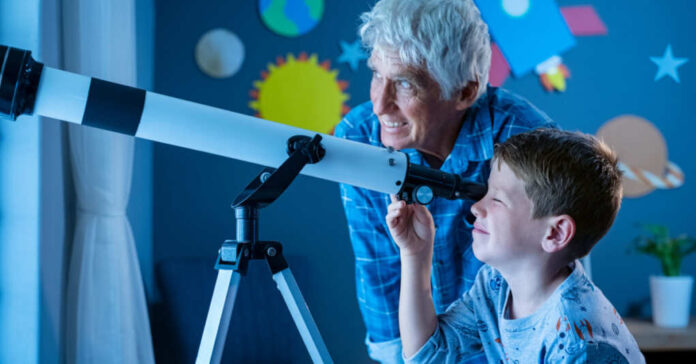
July 20th, 1969 was the first Space Exploration Day. On that day, US Astronaut Neil Armstrong was the first human to set foot on the moon. As families gathered around the TV sets, they saw Armstrong confirm “That’s one small step for man, one giant leap for mankind.” This step set forth a whole new wave of ingenuity and exploration.
First announced via Presidential Proclamation #5224 by President Ronald Reagan on July 20th, 1984, he defined how important it was to continue this work and to explore space as best we can.
“For 25 years, since the first primitive spacecraft heralded the dawn of the Space Age, the United States has expanded the frontier of space research; and the fruits of this research have been shared with scientists of other countries, reflecting the peaceful nature of our exploration. For example, the National Aeronautics and Space Administration has sent remotely controlled satellites on missions to measure the winds of Mars, count the rings of Saturn, and record volcanic activity on a moon of Jupiter; weather satellites have intensely studied the Earth’s weather patterns; and communications satellites have profoundly changed modern life as events and impacts are known instantly and felt worldwide.”
Much like President Reagan suggested, people and organizations across the globe have been driven to achieve based on the actions of Armstrong. Driving them to push the limits of aeronautical engineering to the brink, these incredibly intelligent individuals have been determined to learn more about the way space and our solar systems work.
While most of us aren’t likely to hear to space any time soon, we have opportunities to experience parts of space in on-earth simulations. For example, swimming in a pool without touching the bottom is one of the closest versions to weightlessness that we can experience on Earth. While different salt densities of the water can impact just how weightless we become in water, this is a great way to see what it might be like to go.
In a few camps across the US, there are astronaut camps that people can go to to learn more about reaching outer space. These camps aren’t cheap, but they provide much of the same training that NASA astronauts go through. Additionally, many actual astronauts have been through these space camps over the years before they headed into orbit. By feeding their interests at a young age, their parents planted the seeds of their success. They even have them for grown adults.
Books and movies like the real Apollo 13 story and the Hollywood drama Armageddon provide great insight into space exploration and reflect both the best and worst potentials in space. These entertaining pieces of art take some liberties with the truth about space exploration, but they give great cinematic examples of what being in space is like.
NASA, other organizations, and hobbyist photographers take amazing photos of the night sky and map the stars. These long-exposure images and compilations detail the map of the night sky, and what is floating through the ether for all to see and experience. These images are often featured in National Geographic and have long since inspired people to get into astronomy and photography.
Check out what Mars looks like:
Space exploration is why we now have companies like Space X and even Tesla to a degree. By working diligently on ensuring we can not only take the most advantage of space and Earth’s gravitational forces, but these companies also ensure mankind’s continued growth. Their efforts to get people across the globe not only interested in space but actively trying to explore it has made a dramatic change in how much funding is made available for their efforts.
Space Exploration Day is a day to not only feed the curious kid inside all of us, but it’s also a day to reach for the stars. To do something above and beyond what you normally do. Shoot for the stars, even if you fall short you might still land on a satellite dish.















